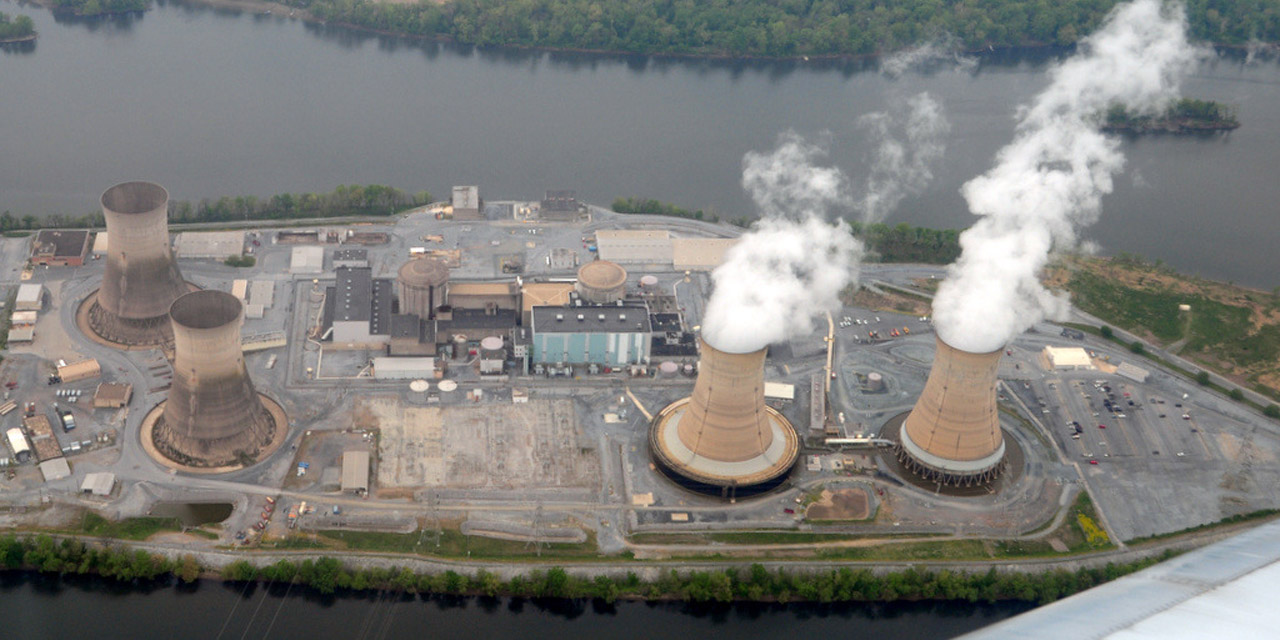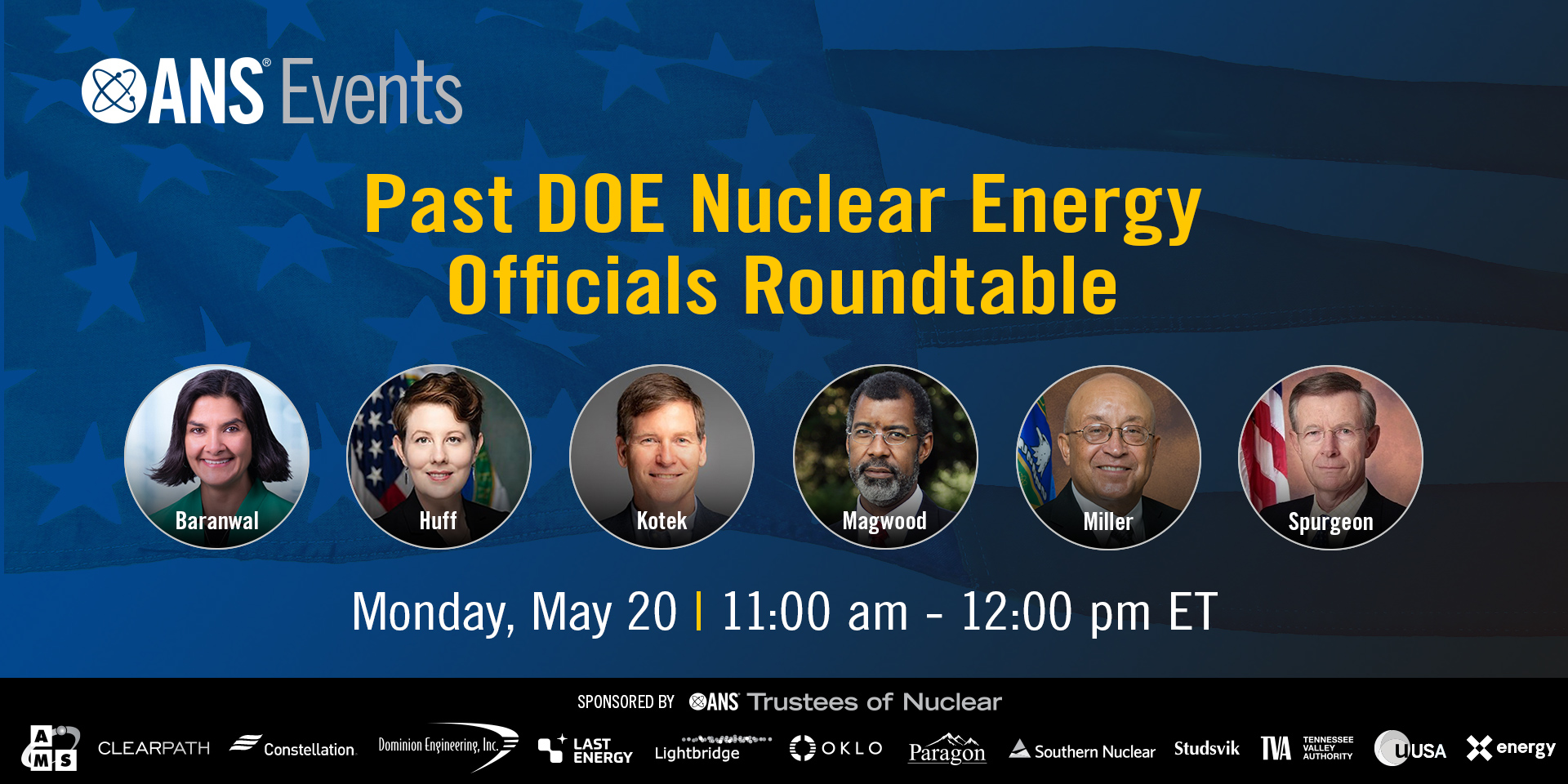An aerial photo of the three mile island nuclear power station. (Photo: Constellation)
On the company’s earnings call this month, Constellation CEO Joe Dominguez was asked if there is a possibility of restarting the shuttered Three Mile Island plant—as is being proposed for the Palisades nuclear plant in Michigan.
“We’re not unaware that opportunity exists for us,” Dominguez said. “We’re obviously seen what’s happened with Palisades and I think that was brilliant. Brilliant for the nation. … We are doing a good bit of thinking about a number of different opportunities, and that would probably certainly be one of those that we would think about.”
FFC board members (from left to right) Kiyoshi Seko (KF), Stephen Bushby (CNL), Satoshi Konishi (KF), and Ian Castillo (CNL) in Tokyo, Japan.
Japan’s Kyoto Fusioneering, a fusion startup spun out from Kyoto University, and Canadian Nuclear Laboratories have announced the formation of Fusion Fuel Cycles Inc., headquartered in Chalk River, Ontario, Canada. The joint venture extends a strategic alliance formed between the two entities in September 2023 and aims to develop and deploy deuterium-tritium (D-T) fusion fuel cycle technologies.
The Argonne-West laboratory site before it was merged with the Idaho National Engineering and Environmental Laboratory into today’s Idaho National Laboratory. The silver dome in the photo is Experimental Breeder Reactor-II, the silver structure with the flat top and sloping sides is the Zero Power Plutonium Reactor, and the brown boxlike structure behind ZPPR is the Hot Fuel Examination Facility. (Photo: Argonne National Laboratory)
Idaho’s nuclear energy history is deep and rich. The National Reactor Testing Station (NRTS) began its history as an artillery testing range in the 1940s.1 Following World War II, Walter Zinn, Argonne National Laboratory’s founding director and Manhattan Project Chicago Pile-1 project manager, proposed to the Atomic Energy Commission that a remote location be found for building test reactors. In 1949, he and Roger S. Warner, AEC’s director of engineering,2 developed a list of potential sites from which the NRTS was selected. Over the decades, quite a few companies and AEC national laboratories built 52 experimental and test reactors at the NRTS, including 14 by Argonne.3 (For a brief AEC video on the NRTS, see youtube.com/watch?v=C458NsH08TI.)
The Zeanah Engineering Complex at the University of Tennessee–Knoxville. (Photo: UT–Knoxville)
Last week Tennessee Gov. Bill Lee and Stuart McWhorter, commissioner of the state’s Department of Economic and Community Development, announced that the University of Tennessee–Knoxville and Roane State Community College will receive funding from Tennessee’s Nuclear Energy Fund to support existing nuclear programs as well as develop and implement new nuclear education curriculum.
Using its portion of the $50 million Nuclear Energy Fund, the University of Tennessee will establish a new program for non-nuclear engineers to obtain a minor in nuclear engineering at its Knoxville campus. Separate funding for Roane State Community College will allow purchase of laboratory equipment for that school’s inaugural nuclear technology program, which launches in the fall of 2024.
Lourdes Legaspi, engineering automation supervisor (center) and her team are designing pipe and equipment components for the Hanford Site’s partially completed HLW Facility. A collaboration between the DOE and Bechtel National set a foundation for requirements engineers will follow in continuing the design of the facility. (Photo: DOE)
The Department of Energy’s Office of Environmental Management announced that its Office of River Protection (ORP) recently created a plan with contractor Bechtel National for completing the High-Level Waste Facility at the Hanford Site’s Waste Treatment and Immobilization Plant, also known as the Vit Plant.
A 125-foot-tall exhaust stack towers over the Safety Significant Confinement Ventilation System’s filter building at the Waste Isolation Pilot Plant. (Photo: DOE)
The Defense Nuclear Facilities Safety Board (DNFSB), an independent government organization responsible for overseeing public health and safety issues at Department of Energy defense nuclear facilities, has alerted the DOE because of safety concerns it has regarding the use of continuous air monitors (CAM) at the Waste Isolation Pilot Plant in New Mexico.
Part of WIPP’s new Safety Significant Confinement Ventilation System (SSCVS), the CAM system is intended to detect a radiological release in the repository and automatically close vent dampers to prevent the escape of radioactive particles to the outside environment. The SSCVS, which began commissioning in November 2023, is intended to increase airflow to the underground to allow for simultaneous underground waste emplacement, mining, and ground control work.
SRMC operators demonstrate procedure compliance during a job at the Savannah River Site’s Saltstone Production Facility. SRMC recently won national awards for demonstrating a commitment to working safely. (Photo: SRMC)
Department of Energy cleanup contractor Savannah River Mission Completion (SRMC) has garnered national recognition for its commitment to safety, recently receiving three awards from the National Safety Council: the Occupational Excellence Award, the Perfect Record Award, and the Superior Safety Performance Award.





 Each year, more than 60,000 middle schoolers throughout the country participate in DiscoverE’s Future City Competition, which asks students to tackle pressing real-world issues through the lens of urban design and engineering. At this year’s Future City Finals Awards Ceremony in Washington, D.C., on February 20, the American Nuclear Society presented the award for Best Use of Nuclear Science.
Each year, more than 60,000 middle schoolers throughout the country participate in DiscoverE’s Future City Competition, which asks students to tackle pressing real-world issues through the lens of urban design and engineering. At this year’s Future City Finals Awards Ceremony in Washington, D.C., on February 20, the American Nuclear Society presented the award for Best Use of Nuclear Science.






